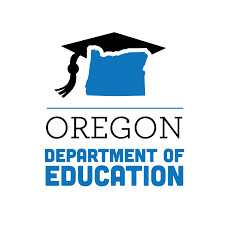The Oregon Department of Education (ODE) released results from the Oregon Statewide Assessment System’s spring 2023 summative tests Sept. 21.
These results, when compared to results prior to the pandemic, show the impact of the pandemic and demonstrate the need for continued investment in accelerating learning in summer and after school programs through school and community-based organizations, the Early Literacy Success Initiative, the Student Success Act, the High School Success Act, and other programs targeting the needs of students.
More students participated in Oregon’s summative tests compared to the previous year. When more students participate, the confidence in the results increases. While still below levels from before the global COVID-19 pandemic, it’s a positive step.
Participation Data
“We need to maintain high expectations and provide high levels of support that will lead to academic excellence for all of our students, whether it’s making sure each and every child from birth through fifth grade is set up for success in learning to read and reading to learn or providing opportunities for high school students to find their path to their dream career,” ODE Interim Director Dr. Charlene Williams said.
“We know that staff and students work hard throughout the school year in so many areas that aren’t reflected in this assessment data. The results from a single test do not tell the whole story of education in Oregon, however they are important indicators that require our attention and more work ahead.”
Purpose of Summative Content Tests
State summative content tests are designed to identify differences in student group outcomes and help improve the education system over time. These tests do not measure the breadth of academic learning of any individual student.
They are robust measures, but are limited to three academic subject areas. They do not name all the strengths, talents, gifts, or needs of any individual. And, they do not describe the full context of what a school is providing socially or academically to students.
Statewide summative test results provide one important measure of school performance and progress annually. These results are easily accessed and quantified and receive attention, in part, because they are easily communicated.
The results hold value by informing education planning and decision making in critical ways. The information from summative tests helps evaluate academic programs across districts and schools and boost school districts’ ability to prioritize additional funds, resources, and supports to the schools, educators, and students who need them most.
State summative test results are most useful when participation thresholds are met. Similar to the challenge of trying to clearly see a pixelated image that lacks individual pixels, it’s harder to see the picture of the education system when participation is lacking. That is why participation in the state summative tests is central to helping improve outcomes for all of Oregon’s students.
A Balanced Assessment System
Oregon’s state assessment system is balanced. It includes coherent, comprehensive, and continuous resources, including: formative assessment resources, interim tests, and summative tests. The resources and data available to all of Oregon’s districts can be used to accelerate learning at all times for students: in the moment in the classroom, periodically throughout the school year, and from year-to-year.
In addition, ODE is shifting toward incorporating qualitative sources of information to support a well-rounded understanding of system strengths and growth areas.
Summative Test Results
This year’s results show that Oregon’s education system is stabilizing. These results also demonstrate that the impacts of the pandemic are lasting. Some student groups have achieved pre-pandemic levels in English language arts, mathematics, and science in Oregon districts, but Oregon students need continued investment and time to grow toward grade level proficiency.
The results are a snapshot in time and reflect how student groups performed in three content areas: English language arts (ELA), mathematics and science. The ELA and mathematics summative tests are given in grades 3-8 plus 11th grade; science assessments are given in grades 5, 8 and 11.
The high school results remain below our Technical Advisory Committee-recommended confidence threshold of 80 percent participation.
Oregon’s English Language Proficiency Assessments (ELPA) evaluate reading, writing, listening, and speaking for students who are multilingual learners.
In depth results of the statewide assessment can be found at oregon.gov/ode.
– ODE press release




